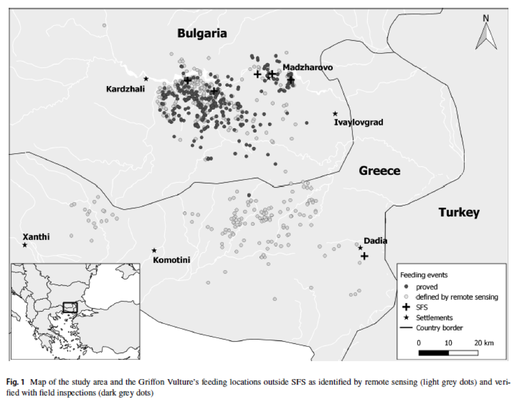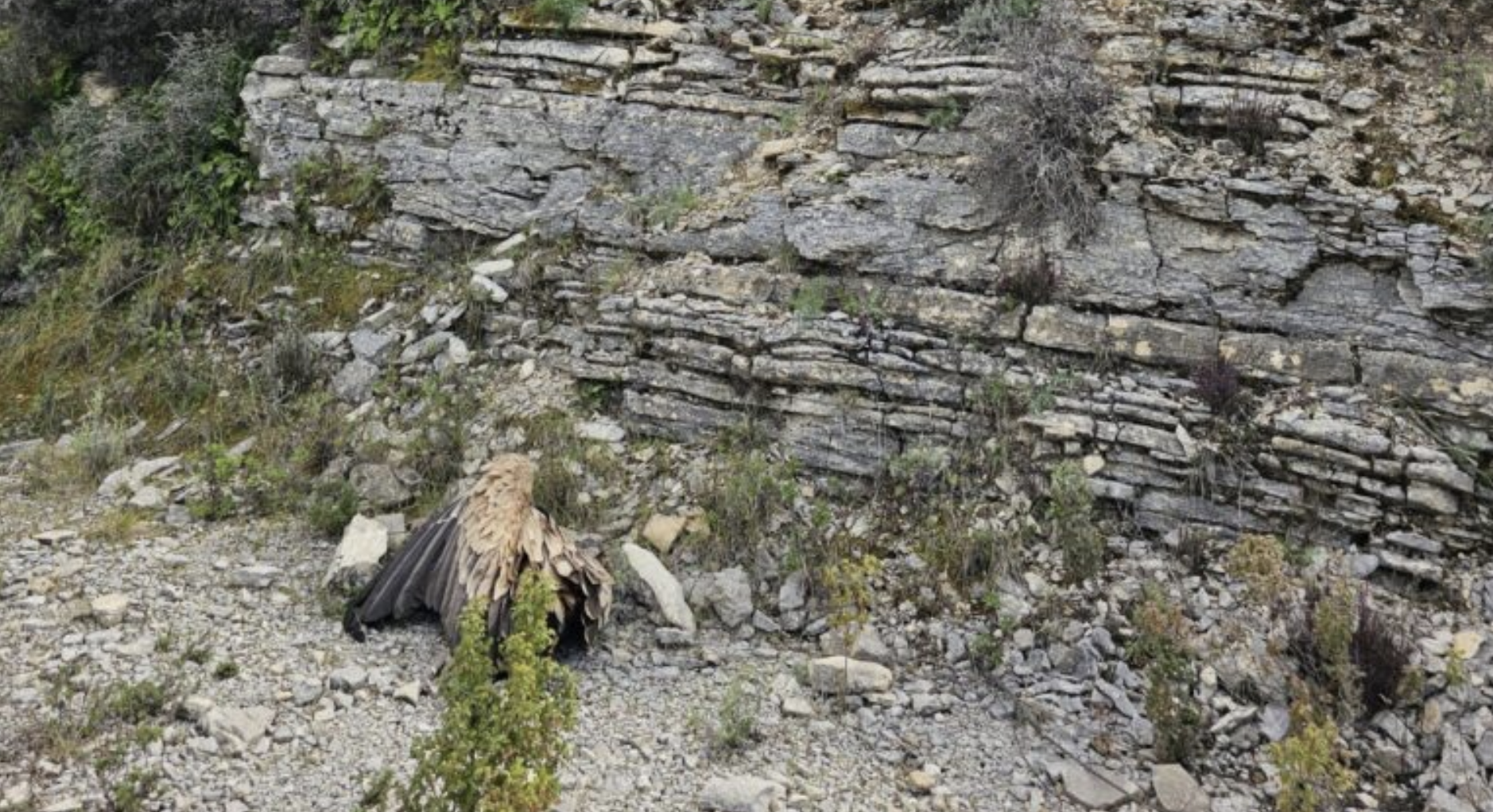
A research article recently published in the Journal of Ornithology has revealed that Griffon Vultures in the Eastern Rhodopes region of Bulgaria and Greece feed most frequently on carcasses distributed across the wider landscape, but that vulture feeding stations are also important to support them through periods when naturally occurring food is scarce, or flying conditions are difficult.
Methods
The study, led by Volen Arkumarev, Dobromir Dobrev and colleagues from the Bulgarian Society for the Protection of Birds and Rewilding Rhodopes Foundation, used a combination of GPS tracking, remote sensing and field investigations to identify feeding events. The team fitted transmitters to 11 Griffon Vultures (seven adults and four immatures) and used accelerometry data, the amount of time the vultures spent in one location, the presence of conspecifics, locations of known feeding sites and field visits to identify 802 carcasses that the vultures fed on. Of those, 77.4% were carcasses distributed across the wider landscape, while 22.6% were feeding events at feeding sites in the Bulgarian and Greek part of the Eastern Rhodopes.
Results
The vultures’ use of feeding sites was lowest in the summer, when less than 20% of feeding events were at feeding sites compared to 56% in the winter. The authors suggest that this is because food availability in the wider landscape is lower during the winter when livestock are generally kept in the lowlands closer to settlements or in shelters, meaning that vultures tend to rely more heavily on the carrion provided at feeding sites. Foraging conditions are also more challenging in the winter period, with shorter days and poor weather conditions restricting flight time. Griffon Vultures travelled further on days when they fed in the wider landscape compared to days when they fed at feeding sites or didn’t feed at all.
The study confirms that, in areas where domestic livestock (farmed extensively or at low intensity) and wild ungulates are abundant, vultures tend to actively forage across the wider landscape and their reliance on feeding sites is generally low, using them mostly when foraging conditions are challenging or other food is scarce.
The authors provide the following recommendations:
- High quality, safe carrion should be provided at the existing feeding sites in sufficient quantities to support and maintain the increasing Griffon Vulture population through the lean winter and chick-rearing periods.
- Additional feeding stations should be established in Bulgaria and Greece, particularly near livestock farms where carcasses could be deposited in an infrequent, unpredictable and tightly regulated and monitored way (i.e. to eliminate the risk of poisoning and enable “natural” foraging behaviour).
- Increasing populations of wild ungulates (e.g. deer) through reinforcement and translocation programs would increase food availability for vultures and reduce the impacts of changing farming practices.
- GPS tracking data can be used in conservation programs to monitor vulture behaviour, identify important resources and detect and react to poisoning incidents and other threats.
This is another great example of how scientific research can directly inform conservation action, and it again shows the value of using tracking data in combination with fieldwork to identify key resources for vultures, as well as identifying and mitigating threats. Congratulations to our colleagues for this interesting and informative publication!
Source
Arkumarev, V., Dobrev, D., Stamenov, A. et al. Seasonal dynamics in the exploitation of natural carcasses and supplementary feeding stations by a top avian scavenger. J Ornithol (2021). https://doi.org/10.1007/s10336-021-01865-1





